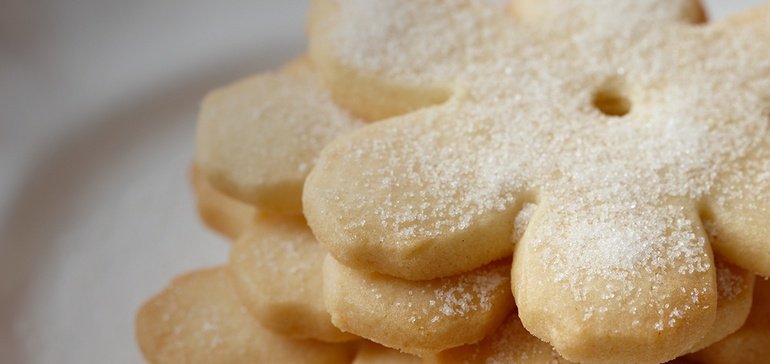Tate & Lyle works to meet ‘extreme’ surge in allulose demand

When Tate & Lyle’s allulose line was first introduced in 2015, the company invested in a marketing campaign to introduce people to the low-calorie natural sweetener.
Abigail Storms, now the global head of sweeteners at Tate & Lyle, told Ad Age at the time that the goal of this campaign was to convince people in the food business that this sweetener — which is 70% as sweet as sugar with 90% fewer calories — was for real.
“When you say low-calorie sugar, particularly to an experienced R&D person, it almost sounds too good to be true,” she told Ad Age. “There is a level of disbelief, but also intrigue and excitement about the possibilities.”
Allulose, which is a close chemical relative of sugar and has many of the same bulking and mouthfeel properties, has only gotten more appealing over the years. Because it is metabolized differently than conventional sugar, the Food and Drug Administration ruled in 2019 that it does not need to be included under a product’s total sugars on the Nutrition Facts panel.
Six years later, allulose has a lot of believers. Since April 2019, there have been 161 new products launched with the sweetener, and many more are in development. With this rapid spike in popularity, some manufacturers are finding it difficult to get a supply of allulose from Tate & Lyle, with the tight supply being mentioned in recent earnings calls.
Storms, in a recent interview with Food Dive, said the company is working hard to meet demand.
“This surge is much more extreme than you would have expected,” she said.
“When you have a surge in demand that literally goes up almost on a weekly basis, there’s a lot of management of how you can meet that demand.”

Abigail Storms
Global head of sweeteners, Tate & Lyle
Tate & Lyle had expected that the ingredient would be popular, Storms said, and the company expected the surge to be right about now. It takes about two years for product development and reformulation to move from concept to a food or drink product, she said — the same amount of time that has elapsed since FDA’s decision on allulose.
And with half of adult consumers actively looking to reduce their overall sugar intake, according to a FONA International report, manufacturers are looking for substitutes that can come as close as possible to replicating the taste and mouthfeel. Plus, with the COVID-19 pandemic changing consumer attitudes about healthier eating, demand for better-for-you food — often made with less sugar — has skyrocketed.
Tate & Lyle’s allulose products, which are marketed under the Dolcia Prima brand, are available in two forms: liquid allulose syrup — used primarly for beverages, ice cream and some confectionery applications — and crystalline allulose — used for finished baked products that are not fat-based, and tabletop sweeteners. Storms said the company is making more allulose every month, and is ahead of demand for the liquid variety. The challenge is meeting demand on the crystalline form, which is desired because of its manufacturing versatility.
Tate & Lyle is working hard to increase its manufacturing capacity for crystalline allulose, Storms said. But she noted this has everything to do with an extremely high demand for the ingredient and is not directly related to other challenges the food business as a whole is facing, like increasing commodity costs or difficulty in finding manufacturing workers.
Storms did not indicate what Tate & Lyle’s current allulose capacity is or how much the company is making. She said the company has the largest allulose manufacturing capacity in the world, and there is one facility in the United States where it is made.
A few other manufacturers make allulose, including Ingredion. All have indicated the popularity of the sweetener has made it difficult to meet demand.
In a call with investors following Tate & Lyle’s most recent earnings report in May, CEO Nick Hampton said that allulose is becoming increasingly more important to the company’s business. It is looking at how to add capacity, and he said the interest in allulose is helping jumpstart the company’s growth.
Allulose has appeared in a variety of products, but bars are the most popular application, according to Tate & Lyle. The next most popular products include sweet biscuits and cookies, dairy ice cream and frozen yogurt, cold cereals, baking ingredients and mixers, and tabletop sweeteners.
Even though demand exceeds supply for some of Tate & Lyle’s allulose sweeteners, Storms said the company is still working with new clients who are seeking an allulose-sweetened product or reformulation. Tate & Lyle’s applications and tech service teams will help clients in terms of formulation support, but they will be open about the surge in demand and potential timing issues to get products out.
And, Storms said, Tate & Lyle is still investing in building awareness of allulose among consumers, manufacturers and health care professionals. So the company is working to create even more business as time goes on.
Storms said that there isn’t a lot that can be said or promised about allulose availability right now, but she is hopeful that supply will soon catch up.
“When you have a surge in demand that literally goes up almost on a weekly basis, there’s a lot of management of how you can meet that demand,” Storms said. “And that’s literally what we’re working on as we speak — to give ourselves that grace of flexibility and ability to meet that demand.”
Source: fooddive.com

